English Heritage sites near Dinton Parish
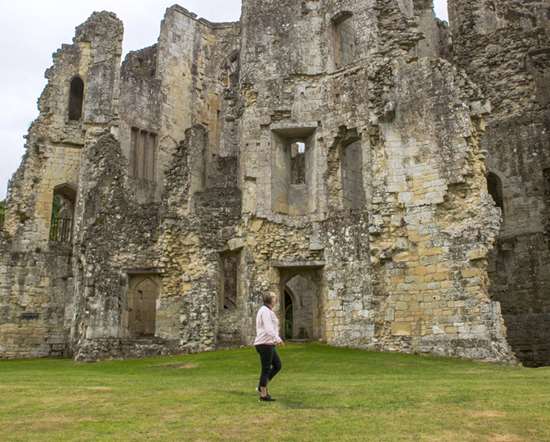
OLD WARDOUR CASTLE
6 miles from Dinton Parish
Set in landscaped grounds beside a lake in peaceful Wiltshire countryside, these 14th century ruins provide a relaxed, romantic day out for couples, families and budding historians alike.
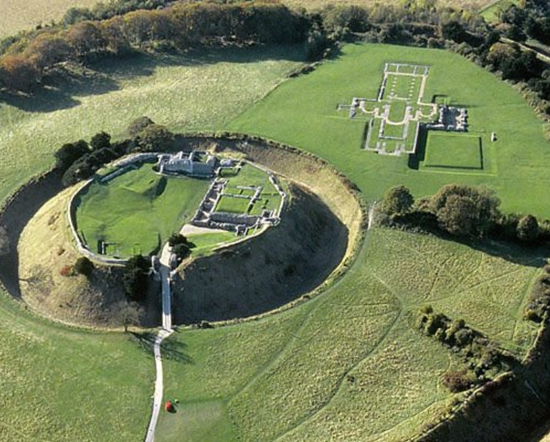
OLD SARUM
7 miles from Dinton Parish
Site of the original Salisbury, this mighty Iron Age hill fort was where the first cathedral once stood and the Romans, Normans and Saxons have all left their mark during 5000 years of history.
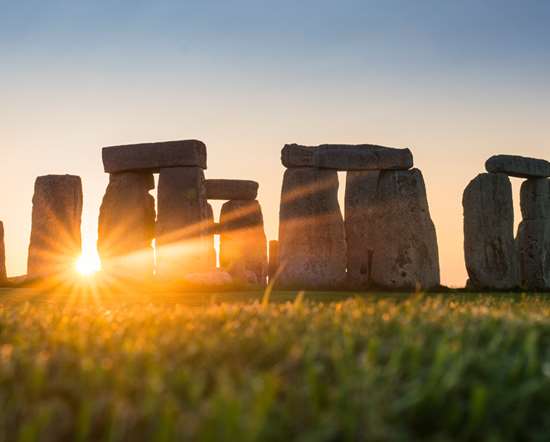
STONEHENGE
8 miles from Dinton Parish
Walk in the footsteps of your Neolithic ancestors at Stonehenge – one of the wonders of the world and the best-known prehistoric monument in Europe.
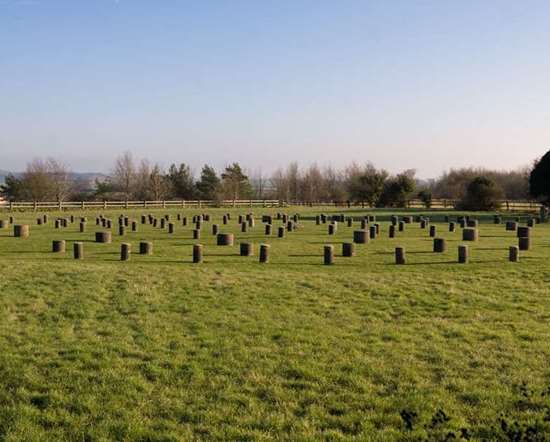
WOODHENGE
11 miles from Dinton Parish
Dating from about 2500 BC, markers now replace rings of timber posts, which once possibly supported a ring-shaped building. Discovered in 1925 when rings of dark spots were noticed in a crop of wheat.
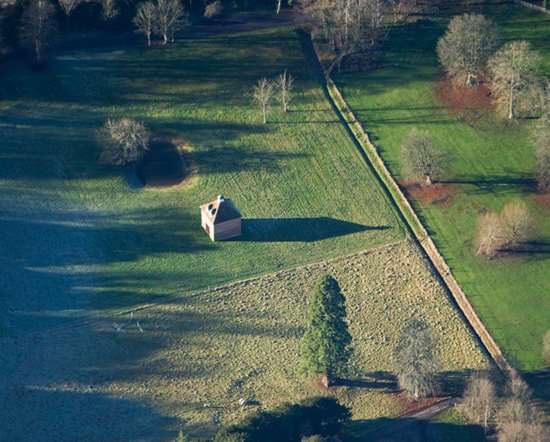
NETHERAVON DOVECOTE
13 miles from Dinton Parish
Charming and elegant 18th century brick dovecote, still with most of its 700 or more nesting boxes intact. Set in peaceful surroundings. External viewing only.
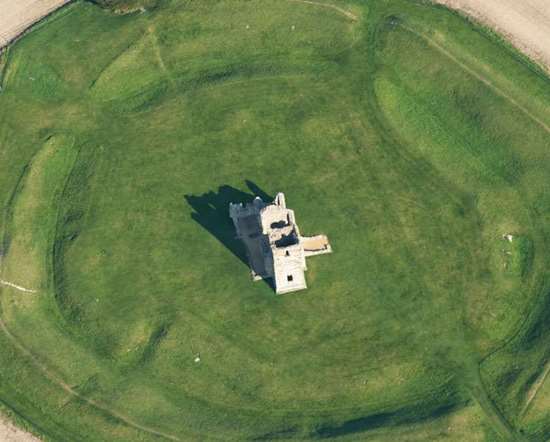
KNOWLTON CHURCH AND EARTHWORKS
14 miles from Dinton Parish
The siting of this ruined medieval church at the centre of a Neolithic ritual henge earthwork symbolises the transition from pagan to Christian worship and creates an atmospheric scene.
Churches in Dinton Parish
Baverstock: St Editha
Baverstock Lane
Baverstock
SALISBURY
+44 (1722) 71788
Baverstock
The hamlet of Baverstock lies just north of the B 3089 Hindon Road, between Barford St Martin and Dinton. The church of St Edith's marks the beginning of the hamlet.
HISTORY
In 968 the Saxon King Edgar, gave 300 acres of land at Baverstock to the Abbey of Wilton. A strong link between Baverstock and Wilton Abbey lasted until the dissolution of the monasteries in the 16th century. This came about when in 960 the king visited Wilton Abbey and was so taken with a young nun called Wulfthryth that he took her back to his manor house in Kent where a daughter, Edith, was born in 961. Eventually she and her mother returned to Wilton Abbey, where Wulfthryth became abbess. Edith led a saintly life building a church in Wilton before she died in her early twenties. Her tomb in the abbey became a place of pilgrimage. The church in Baverstock is dedicated to St Edith and is one of only two in England with such a dedication.
Archaeological evidence suggests that there was at one time a larger church on the site of the present day building. The nave and tower of the modern church were built in the mid 15th century. It is a plain building with a porch on the south side. Inside there is a font of the same period as the main church. On either side of the altar are four flat stones with full length crosses incised into them. One of the stones has a barely readable inscription to a Willoughby child who died in 1611. In 1551 Christopher Willoughby, (a nephew of Cecilia Willoughby, one of the last abbesses of Wilton before the dissolution of the monasteries) was the first lay patron of the church and is described as Lord of the Manor of Baverstock. Fifty or so years later another Christopher Willoughby was instituted as Rector of Baverstock. Links with the Willoughby family continued with John Willoughby building the Jacobean manor house in the 17th century. These links with the Willoughby family came to an end in 1649, the same year that King Charles I was executed.
Baverstock was a hamlet in a favourable position. On the northern boundary of the parish lies Grovely Wood, providing timber for the villagers, fine quality hazel nuts in autumn, and shelter from the north wind. Here roughly marking the parish boundary is a Roman road leading from Old Sarum to the lead mines in the Mendips. Towards the southern boundary are south facing cultivated fields and the water meadows.
The 18th century was the period of the Turnpike Road. In 1761 the road from Salisbury through Baverstock and on to East Knoyle became a turnpike, or toll road (the road now known as the B3089). On this road in 1779 an outrage occurred that shocked the inhabitants of Baverstock. Mrs Thring of Burcombe was walking on the turnpike road when a highwayman accosted her demanding her money or her life. She gave him what she had, two shillings and her silk cloak. When he asked for her shoe buckles and ring, she lied that her husband was at hand. The highwayman spurred his horse and galloped away. When the alarm was raised a posse set off in chase. They quickly caught up with the highwayman and were surprised to find a highwaywoman, whom they recognised as 24 year old Mary Abraham of Baverstock! At her trial it transpired that she had been equipped by the blacksmith at Quidhampton. She was found guilty and sentenced to death but later reprieved, but records do not say what became of her.
Early in the 19th century a new Rectory was built on the opposite side of the road to the church. It was an imposing Regency residence and replaced the old rectory beside the church which had been burnt down in 1796. It had rarely been home to the Baverstock clergy, who were in the most part absentee rectors. One of the most memorable of the Baverstock rectors was William Hony. He became rector in 1827 and remained until he died in 1875. He additionally became Archdeacon of Sarum in 1847. He made considerable changes to Baverstock during his incumbency. His first task was the dilapidated church. He replaced nearly everything except the walls and these he raised. The parishioners contributed 100 towards the cost, the rector paying the remainder. His next project was to build a school for the children of Baverstock. This was built next door to the church on the site of the old Rectory. Later in the 19th century the children were transferred to a new school at Dinton. The Baverstock school became first a Sunday school and eventually a private house and remains so today.
In the south of the parish and just across the River Nadder lies the manor of Hurdcott. In medieval times this was a hamlet of a similar size to Baverstock, but in recent centuries it has diminished to little more than the Manor House and farm. During the First World War in 1917 Hurdcott House was taken over by the Australian Imperial Force and was used as a training camp for about 1700 men. Within six months many sick men were posted to Hurdcott and it became more like a military hospital. In 1918 with the outbreak of the severe 'flu epidemic the numbers of sick increased. The 32 military gravestones in the churchyard are the first thing to catch the eye and bear witness to the heartbreak of wartime deaths.
(Helen Boucher, October 2003)
Dinton: St Mary
St Marys Road
Dinton
+44 (1722) 71788
The parish of Dinton lies alongside the B3089 nine miles to the west of Salisbury within a designated Area of Outstanding Natural Beauty. St. Mary’s Church, a Grade 1 Listed Building, is within the Dinton Conservation Area. The adult population of about 670 live in a range of housing types, including properties for the elderly, low-cost and social housing, many privately owned properties and several houses belonging to the National Trust: Philipps House and Dinton Park, Hyde’s House, Lawes House and Little Clarendon lie within the village (Only the Park is open to the public). It also has a broad mix of socio-economic groups and ages. There is some light industry and a publishing company on three small industrial estates, and rural employment on surrounding farms. Some of the residents work in local towns such as Andover, Amesbury, Salisbury, Shaftesbury, Wilton, and Warminster. See www.southwilts.com/site/dinton for more information on the village.
As well as the Church, the community has a thriving Church of England (Controlled) primary school, a nursery school, a garden centre, two pubs, a community-run village store, a builders’ merchant, a modern village hall and a recreation ground, all of which provide the basis for employment as well as social and community activities. Dinton has active cricket and rugby clubs, WI and an Historical Society. There is a small Roman Catholic chapel in the grounds of Little Clarendon, built by the Engleheart family of daffodil fame.
The twelfth-century church of St Mary, with major nineteenth century alterations undertaken by William Butterfield, has four Sunday services a month which include Holy Communion BCP, Order 1 Parish Communion, Morning Prayer (usually lay led), and Family Communion. The church itself is open every day. The school has regular services in the church, and enjoys frequent visits from the clergy. There is a well-established Messy Church held in the school on Saturday afternoon once a month. The Remembrance Sunday service alternates between St Mary’s Church and St Martin’s Church, Barford St. Martin. Dinton War Memorial is located in St. Mary’s churchyard.
The church is an important part of the community in this thriving, friendly village. It is supported by many people, including those who do not attend church. The churchyard continues to accept burials. The Friends of St. Mary’s, Dinton (Charity No. 1101125) is currently in the process of raising funds for roof repairs to match a substantial grant from the Listed Places of Worship Roof Repair Fund. The money is raised from substantial legacies and activities such as Open Gardens and providing teas to visitors to the Park.
Our vision ranges from initiatives such as outreach to schoolchildren through Messy Church and seeking other ways of reaching out to the community, whilst maintaining our variety of worship, including the traditional.
Pubs in Dinton Parish
Penruddocke Arms

Hindon Road, Dinton, SP3 5EL
(01722) 716253
penruddockearmsbedandbreakfast.co.uk/
Wyndham Arms

Hindon Road, Dinton, SP3 5EG
(01722) 716999
thewyndhamdinton.co.uk
